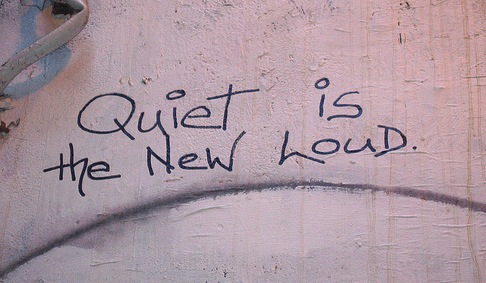Useful Paranoia
When I consider the world of PR, I see confidence and extroverts. Shining the same torch on IT, I find shyness and diligence. The middle ground of social media combines these two in a very unusual way that can produce uncomfortable compromise or magnificent insight.
Some of the best traditional marketeers I’ve worked with lose their confidence when asked to improvise on a live, conversational platform - especially when bombarded with advice such as “keep it natural, don’t sell, accept negativity”. Equally, those people I know who could recode Facebook overnight shy away from using the interface they create, finding it hard to trust their voice in an amphitheatre.
There is a boldness inherent in those who trust their instincts to take on the role of daily brand updates on social platforms. In a single sentence or through the sharing of an image, one is expected to both project a tightly curated voice and still engage the ‘average Joe’. Every word should be considered for every possible interpretation whilst still forming a call for response that seems natural and often whimsical. Even when you get it right, you’re not always sure how you did it and may not be able to teach it.
I find the flood of words on Facebook and Twitter fascinating. For someone who is naturally anxious and analytical, I see as much value in what is not said as what is.
For me, the perfect ‘big brand’ social update carries more than a pinch of Zen. There is a form of compassion and a respect for insight required in the construction of these short statements. Echoing the challenges of AdWords, a single apostrophe, turn of phrase or even shape of a verb can be the difference between acknowledgement (liking) or adoption (sharing). I could spend an hour reconsidering the phrase “What lovely weather we’re having” and find the time well invested.
In workshops I can quickly identify those who I’d like on my team. Some extroverts find it hard to pause, failing to understand that their body language, expression and personality won’t translate into the written word. Some introverts pause too long, trying to find a pleasing response that carries a safety net but won’t ignite ambassadorial passion. The slightly anxious type usually excels, hitting the mark between exhibitionism and diffidence. A degree of social anxiety adds positive outcomes to the perfect group effort.
Of course, those who worry too much will always fail. Their Tweets will be well considered and strategic, but the very nature of the game - talking to strangers - will lead to the task becoming unpleasant and unrewarding. Those who believe in the usefulness of the Myers-Briggs Type Indicator (an expansion of Carl Jung’s ideas about personality types) might suggest the perfect fit for a social media manager, being INFJ, that slightly mysterious type whose enhanced creativity comes with equal measures of empathy and an inbuilt desire to ‘protect the pack’. The underrated Wolf.
It’s a funny world, social media. It’s a world where everyone is talking but conversations rarely take place. It could be said that the original ROI (ambassadorial engagement) is lost as soon as an iconic brand speaks, for surely a predisposed ambassador has a more intricate perception of positivity than you can ever hope to mirror and therefore amplify. Intelligent brands that understand the benefit of paranoia will speak less often and remain likable because of it.
Of course most brands are not 100% likeable or indeed known at all by their new fans - and it’s here the paranoid, anxious type can fulfil a valuable role, considering what to share and how their reaction to feedback might be perceived. After all, it’s hard to be enigmatic when trying to be available.
The conclusion is not positive. I am the anxious type and whilst I succeed to some extent commercially, it carries a burden. The way I view things (intricate things) might be better if I were able to express them theoretically rather than through demonstration. After all, most people see only one sentence on Twitter or Facebook where I see another six or seven variations that were implied, hinted at, reasoned with or rejected.
In a real world context, I can see immediately which of ten bar stools 99% of strangers will select when walking into a pub (it’s a great party trick) but I would never pick the same one. Us paranoid types are very useful when planning the party but we do so knowing we’d probably never attend.
If you want to take a lesson from my suggestions, consider widening your social media recruitment strategy to include those who don’t come across as confident on first glance. You might find they see more of the intricacy involved in words than you might imagine and that will add value to your communications. However, when hiring them, be sure you don’t put their desk right in the middle of the room, we tend to prefer corners.
#usefulparanoia
Photo (cc) Broken Simulacra.



